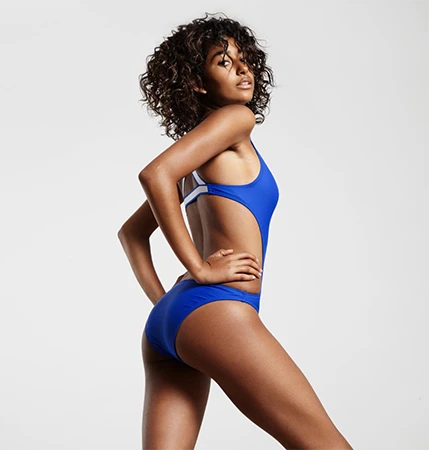Conventional and HD liposuction
HDL – High-definition liposculpture
I have an exclusive contract with JK Estética
Liposuction in São Paulo using
different technologies
Liposuction
Alongside breast augmentation, liposuction is the most commonly performed cosmetic surgical procedure in the world.
This involves the removal of localized fat from the abdomen, back, sides of the chest, flanks, arms, legs and culottes using thin cannulas connected to a suction device.
It is therefore not suitable for weight loss. Good preparation beforehand with physical activity and proper nutrition is essential for success.
As liposuction acts on the subcutaneous fat (tissue just under the skin), it is not able to eliminate the visceral fat, which is the internal fat that surrounds the organs and is associated with a prominent abdominal volume and cardiac risks throughout life.
Liposculpture combines liposuction with lipografting (placement of the body’s own fat, separated from the aspirated blood fraction), in areas such as the buttocks, abdomen, back, legs and arms.
HD (high definition) Liposculpture
HD (high definition) liposculpture, also known as HDL (high definition liposculpture), seeks to deliver an artistic look, while respecting the anatomy and individuality of each patient.
This technique seeks to emphasize muscle anatomy. Therefore, drawings are not created, but rather each person’s musculature is highlighted.
It can have more basic, subtle and discreet markings; moderate (women’s favourite), with well-defined transition lines; or extreme, with the demarcation of “chunks”.
Technique constantly evolves. Nowadays, we can achieve more beautiful and natural results in the medium term with the use of a technique called Ugraft, which is muscle lipograft guided by intraoperative ultrasound.
With regard to safety, it should be noted that muscle grafting is not performed in the gluteal region.
We perform fat grafting above the muscle in this area, as the caliber of the vessels in the area poses a greater risk of fat embolism to the pulmonary circulation.

The Evolution of Liposculpture
Liposculpture has come a long way, and today we have vibro-liposuction devices and technologies that optimize the procedure:
Vaser (an ultrasonic device that aims to emulsify the fat, liquefying it, as well as breaking up any fibrosis from previous aspirations) and plasma jet (Renuvion/Argoplasma), which aims to help retract the skin. This device generates heat in the subcutaneous tissue and is applied with the help of a “gun” that the plastic surgeon inserts through the same holes created for liposuction.
The equipment works by shrinking tissues using a radiofrequency compound and helium gas (in the case of Renuvion) or argon gas (in the case of Argoplasma) which turn into plasma when ionized by the device, known as the “fourth state of matter.”
The secondary effect, which is the stimulation of collagen in the area, occurs up to six months after surgery. Studies suggest that the device can increase skin contraction by 20 to 60%.
Additional information
Liposuction and Liposculpture
Click on the questions to see the answers
However, there are cases in which sagging skin may not be resolved with technology, requiring complementary procedures and even surgery to remove it. It is important that the patient is prepared and aware of limitations that are sometimes difficult to predict.
With regard to post-operative care, we recommend avoiding driving for the first 15 days.
The use of drains is commonplace, and they are removed when the output over 24 hours falls below 100mL. However, punctures may be necessary to remove the fluid, using syringes and needles.
This liquid is called seroma, which the body produces to occupy the space where the removed tissue used to be. Initially, the seroma will be red in color, as it is mixed with blood residue; over time, it will become more yellowish and fluid in appearance.
Purple spots (ecchymoses) are common, even with prior infiltration with saline solution and medication to minimize bleeding, such as adrenaline and transamin.
Avoiding exposure to the sun while bruising is present is essential (generally in the first 2 months).
Currently, we recommend a minimum of three days of hyperbaric oxygen therapy, which promotes faster healing and reduces the inflammatory process.
The more sessions performed, the greater the oxygenation of the tissues.
The use of the post-surgical brace, as well as the containment plates, is usually indicated for a period of 2 months.
It is essential that lymphatic drainage is carried out early on, on the first day after surgery, and maintained at longer intervals over the following months.
The result usually appears in the third month, stabilizing in the sixth month after surgery.
With regard to risks, it should be noted that anywhere in the world, an informed consent form will be provided, which includes: unfavorable scars, bleeding (hematoma), need for blood transfusion, fluid accumulation (seroma), anesthetic risks, skin necrosis, numbness or other changes in skin sensitivity, asymmetry, skin depigmentation and/or prolonged swelling, burn caused by the technologies, rhabdomyolysis (muscle damage with the risk of kidney failure and the need for hemodialysis, perforations in hernias, damage to deeper structures such as nerves, blood vessels, muscles and lungs, prolonged pain, deep vein thrombosis, heart and lung complications, infections, loss of grafted fat, residual flaccidity and the possibility of another surgical procedure.
These complications can be found on the website of the Brazilian Society of Plastic Surgery – São Paulo Regional – at this link: https://www.sbcp-sp.org.br/procedimentos-cirurgicos/lipoaspiracao/.
Unfortunately, there are no risk-free surgeries. However, you will always be able to count on our comprehensive support and professional service.
Surgeries are carried out after preparation, with preoperative tests, adequate hospital infrastructure and post-operative follow-up for the next few months, until the result stabilizes.